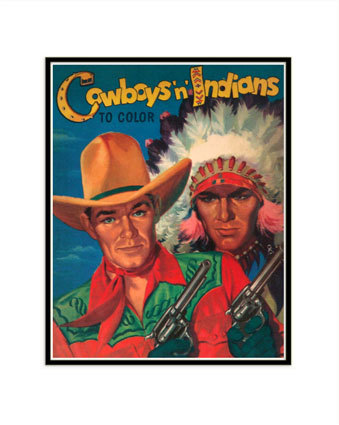 |
"As Wild felled one of the redskins by a blow from the butt of his revolver, and
sprang for the one with the tomahawk, the chief's daughter suddenly appeared.
Raising her hands, she exclaimed, 'Go back, Young Wild West. I will save her!'"
(1908)
|
This copy of a weekly magazine published at the beginning of the twentieth century shows how westerns were written about more than 100 years ago. Boy how things have changed. Dusty Richards once told me that the pioneers in western writing did all the hard work. They had to describe a land not seen by many Americans. A wild and rugged view of landscape and people that were often hard to explain to anyone who hadn't been west of the Mississippi. Imagine writing about a vast desert and expecting a city slicker back east to see it. It took a lot of skill to explain to readers where the hero's horse tread. Below is a short explanation I found that explains a little about western literature and its history.
Pre-1850s
1850s-1900
The Western as a specialized genre got its start in the "
penny dreadfuls" and
later the "
dime novels". Published in June 1860, "Malaeska;
the Indian Wife of the White Hunter" is considered the first dime novel. These
cheaply made books were hugely successful and capitalized on the many stories
that were being told about the mountain men, outlaws, settlers and lawmen who
were taming the western frontier. Many of these novels were fictionalized
stories based on actual people:
Buffalo Bill,
Wild Bill Hickok,
Jesse James,
Wyatt Earp (who was still alive at the time) and
Billy the Kid.
By 1900, the new medium of
pulp magazines also helped to relate these
adventures to easterners. Meanwhile, non-American authors like the German
Karl May picked up the genre, went to
full novel length, and made it hugely popular and successful in continental
Europe from about 1880 on, though they were generally dismissed as trivial by
the literary critics of the day.
1900s-1930s
Popularity grew with the publication of
Owen Wister's
The Virginian in 1902 and especially
Zane Grey's
Riders
of the Purple Sage in 1912. The first
Hopalong Cassidy stories by Clarence l.
Mulford appeared in 1904 both as dime novels and in pulp magazines. When
pulp
magazines exploded in popularity in the 1920s, western fiction greatly
benefited (as did the author
Max
Brand, who excelled at the western short story). Pulp magazines that
specialised in Westerns inclued
Western Story Magazine,
Star
Western,
West,
Cowboy
Stories and
Ranch
Romances.
[1] The simultaneous
popularity of
Western movies in the 1920s also helped the
genre.
1940s-1960s
In the 1940s several seminal Westerns were published, including
The
Ox-Bow Incident (1940) by
Walter
van Tilburg Clark,
The Big Sky (1947) and
The Way West (1949) by
A.B.
Guthrie, Jr., and
Shane (1949) by
Jack Schaefer. Many other Western authors gained
readership in the 1950s, such as
Luke Short,
Ray Hogan, and
Louis L'Amour.
The genre peaked around the early 1960s, largely due to the tremendous number
of Westerns on
television. The
burnout of the
American
public on television Westerns in the late 1960s seemed to have an effect on the
literature as well, and interest in Western literature began to wane.










